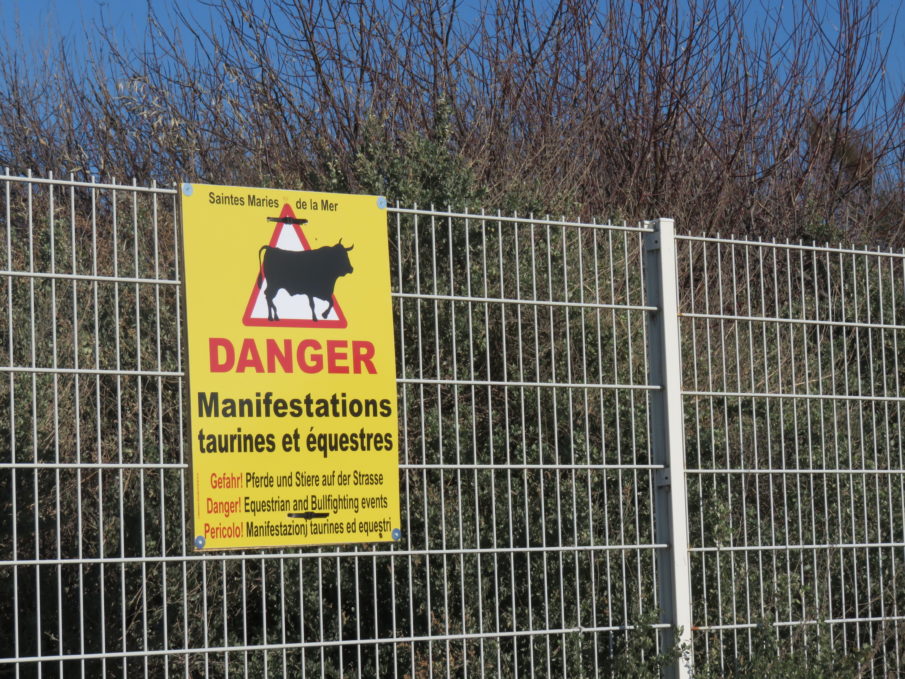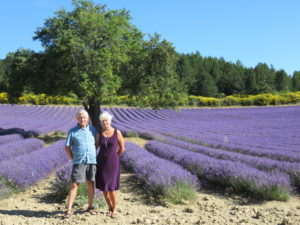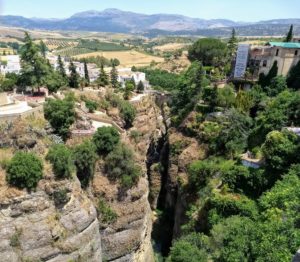It is impossible to travel in parts of Provence, Camargue, and Languedoc without seeing the signs for bullfights in the towns and villages. The Camargue is famous for its black fighting bulls, who are light but fast. Unlike a typical Spanish Corrida when the bull has one fight for his life, in France, the bulls are not killed. A good Camargue bull can fight for a decade and even have statues built in its honor. Those bulls not chosen for fighting end up on the dinner plate. However, these bulls are roaming free and eating nutritious grass. The result is some of the tastiest and most tender meat you’ll ever have!
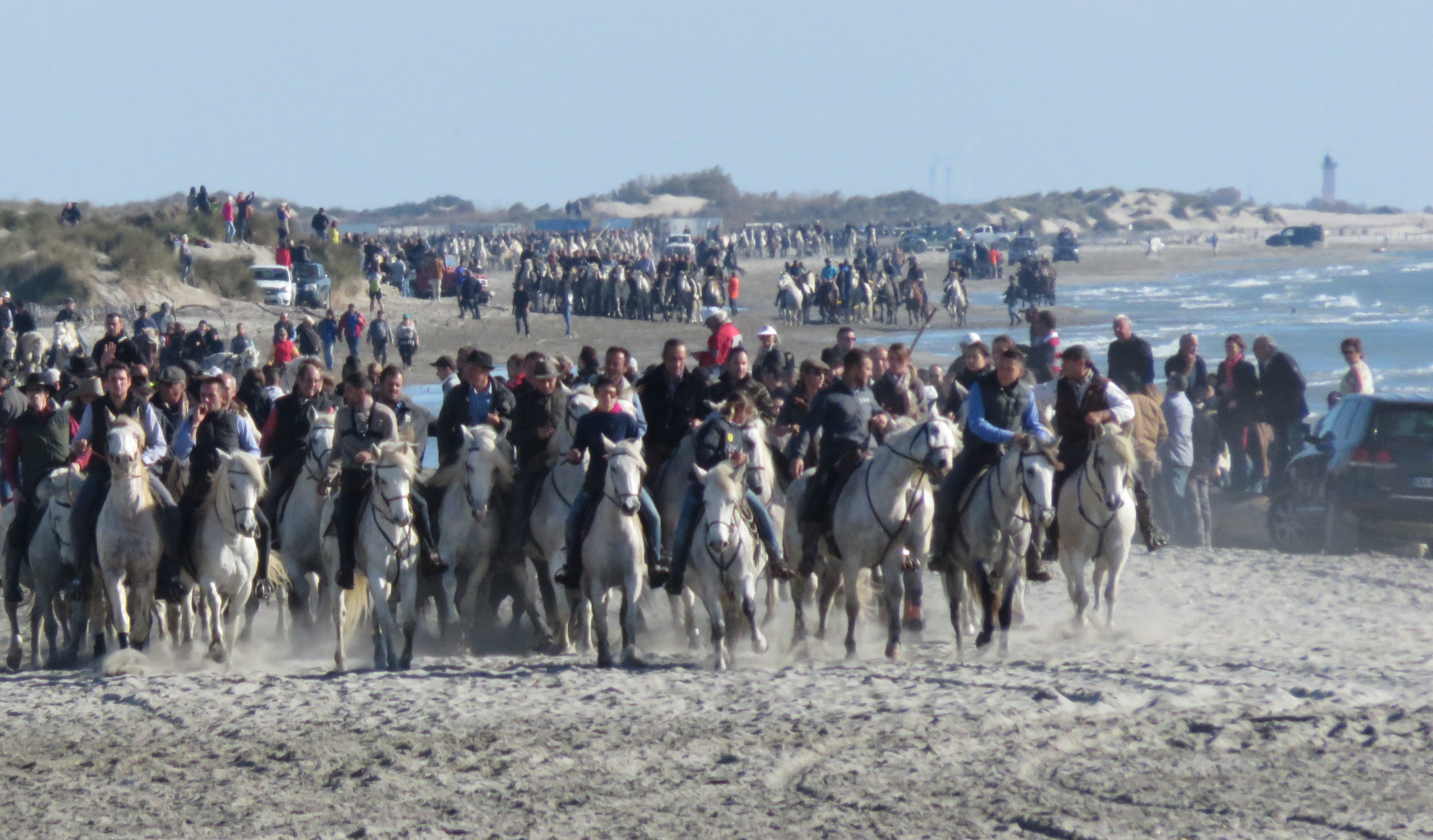
Before any fight is the traditional rounding up and driving of the bulls (Abrivados) to the arena. We watched this in the coastal village of Saintes-Maries-de-la-Mer, the capital of the Camargue. Nowadays, these drives are more organized than in the past but still interesting. The horse riders greatly outnumber the bulls as they arrived in waves along the beach in between the spectators. You could hardly see the bulls in the middle, though occasionally one managed to break out. 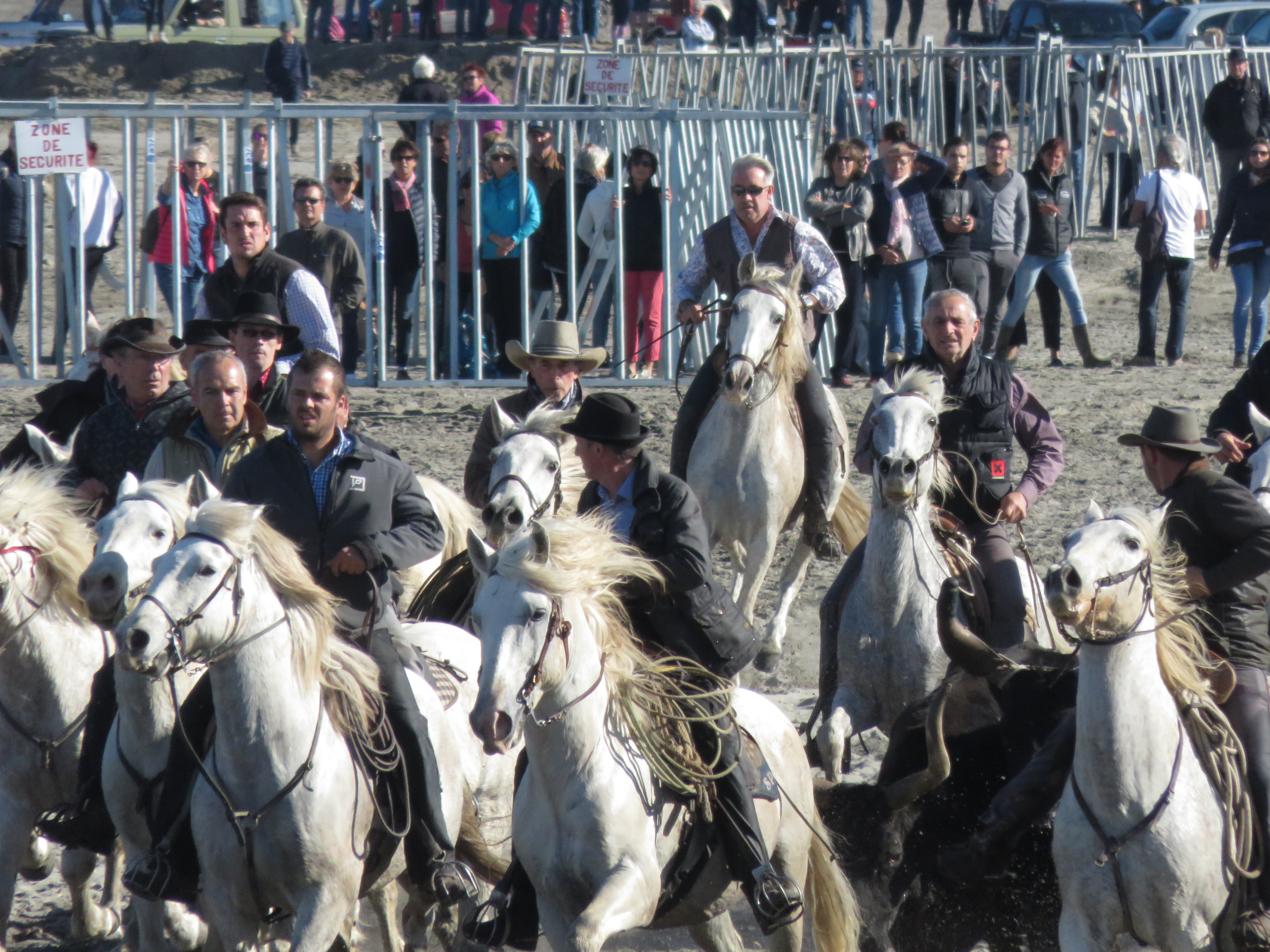 As the spectacle has become more controlled, the local men have decided to make life difficult for the horse riders. After the consumption of a certain amount of alcohol or liquid confidence, they try to help the bulls escape by running in between the horses and bulls attempting to separate them.
As the spectacle has become more controlled, the local men have decided to make life difficult for the horse riders. After the consumption of a certain amount of alcohol or liquid confidence, they try to help the bulls escape by running in between the horses and bulls attempting to separate them. 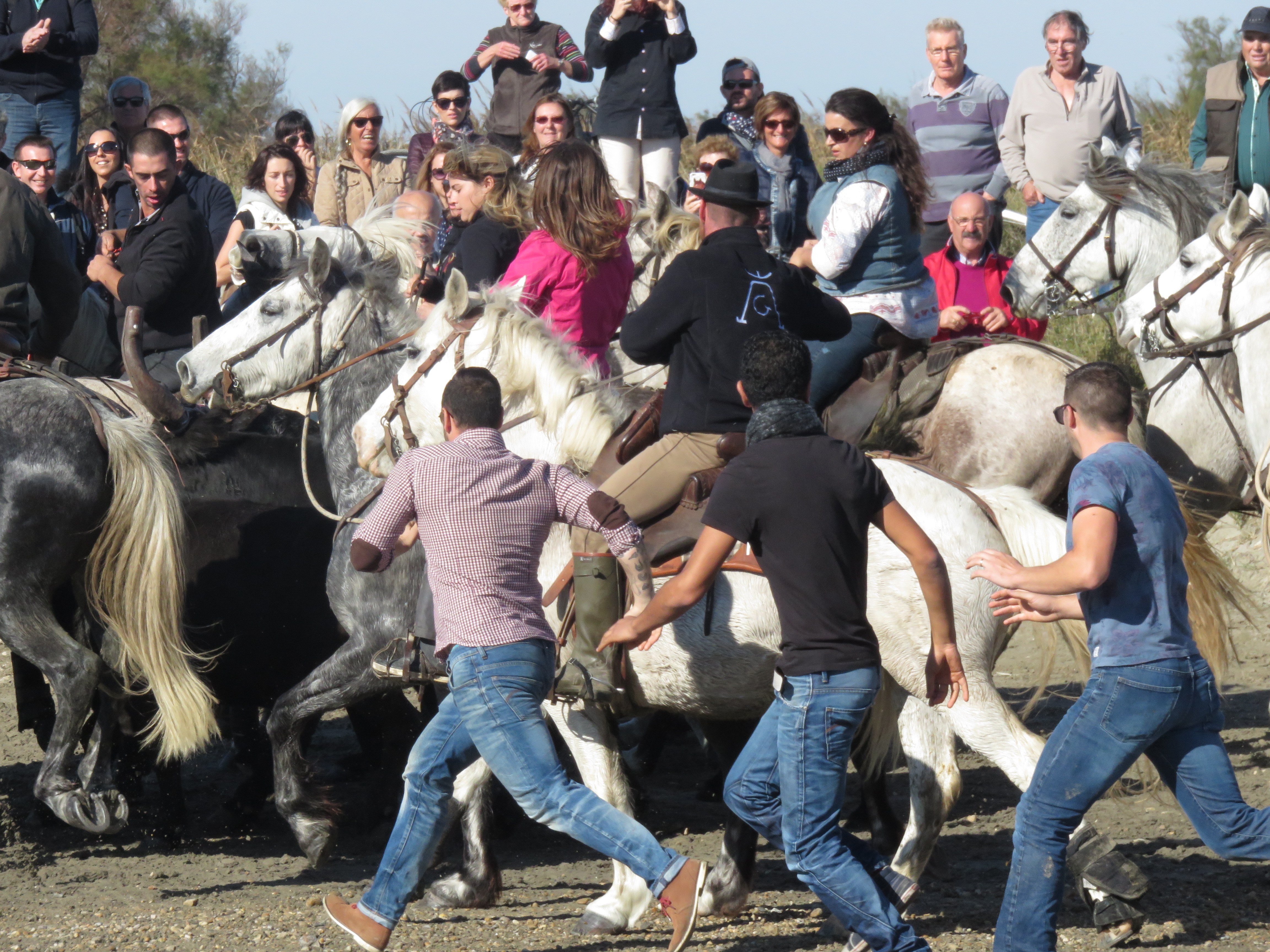 Other foolhardy souls throw caution into the wind and grab the bulls’ tails firmly skating or running behind until knocked over by a bull or horse. A fearless participant had forgotten his limitations running into a group of bulls and horses and within a few seconds was ejected out the back, falling unconscious to the ground. After a few anxious moments he slipped back into consciousness and appeared to be OK, but quickly was swept up by the ambulance. A good time was had by all!
Other foolhardy souls throw caution into the wind and grab the bulls’ tails firmly skating or running behind until knocked over by a bull or horse. A fearless participant had forgotten his limitations running into a group of bulls and horses and within a few seconds was ejected out the back, falling unconscious to the ground. After a few anxious moments he slipped back into consciousness and appeared to be OK, but quickly was swept up by the ambulance. A good time was had by all!
In a village just south of Avignon we attended a bullfight. The goal of the French matador, or Raseteur, is to pluck a ribbon from between the bull’s horns, or tap the bull between the horns. 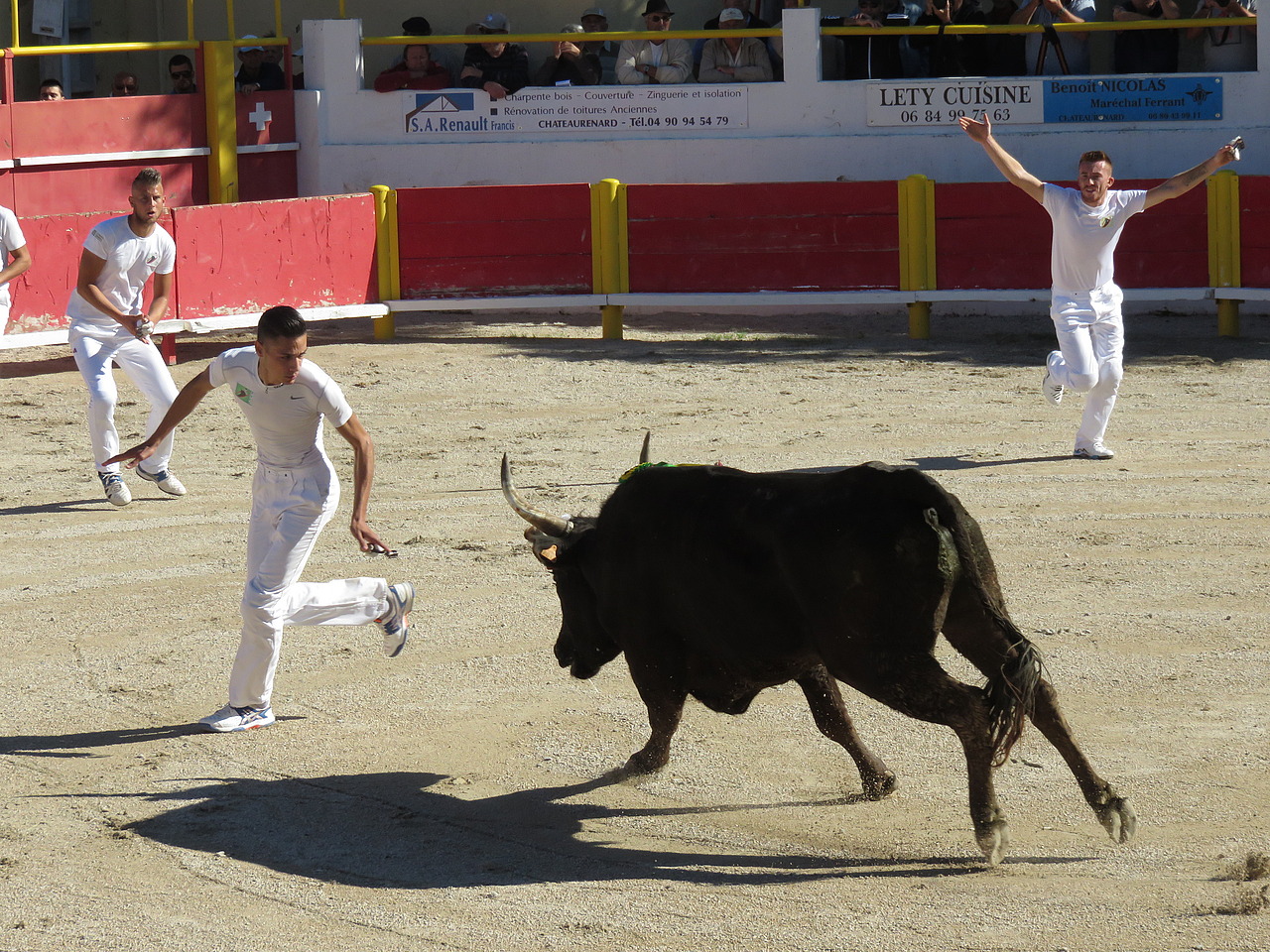 The bulls aren’t killed or injured, but it can be dangerous for the men trying to get to the ribbon. The scoring system is based on the strings and tassels tied between or around the horns. Each runner is armed with a small hooked metal tool, the crochet, with which they must cut the cocarde, a thin ribbon between the horns. This scores two points. Detaching the ficelles, the tightly wound strings around the base of the horns, scores four.
The bulls aren’t killed or injured, but it can be dangerous for the men trying to get to the ribbon. The scoring system is based on the strings and tassels tied between or around the horns. Each runner is armed with a small hooked metal tool, the crochet, with which they must cut the cocarde, a thin ribbon between the horns. This scores two points. Detaching the ficelles, the tightly wound strings around the base of the horns, scores four.
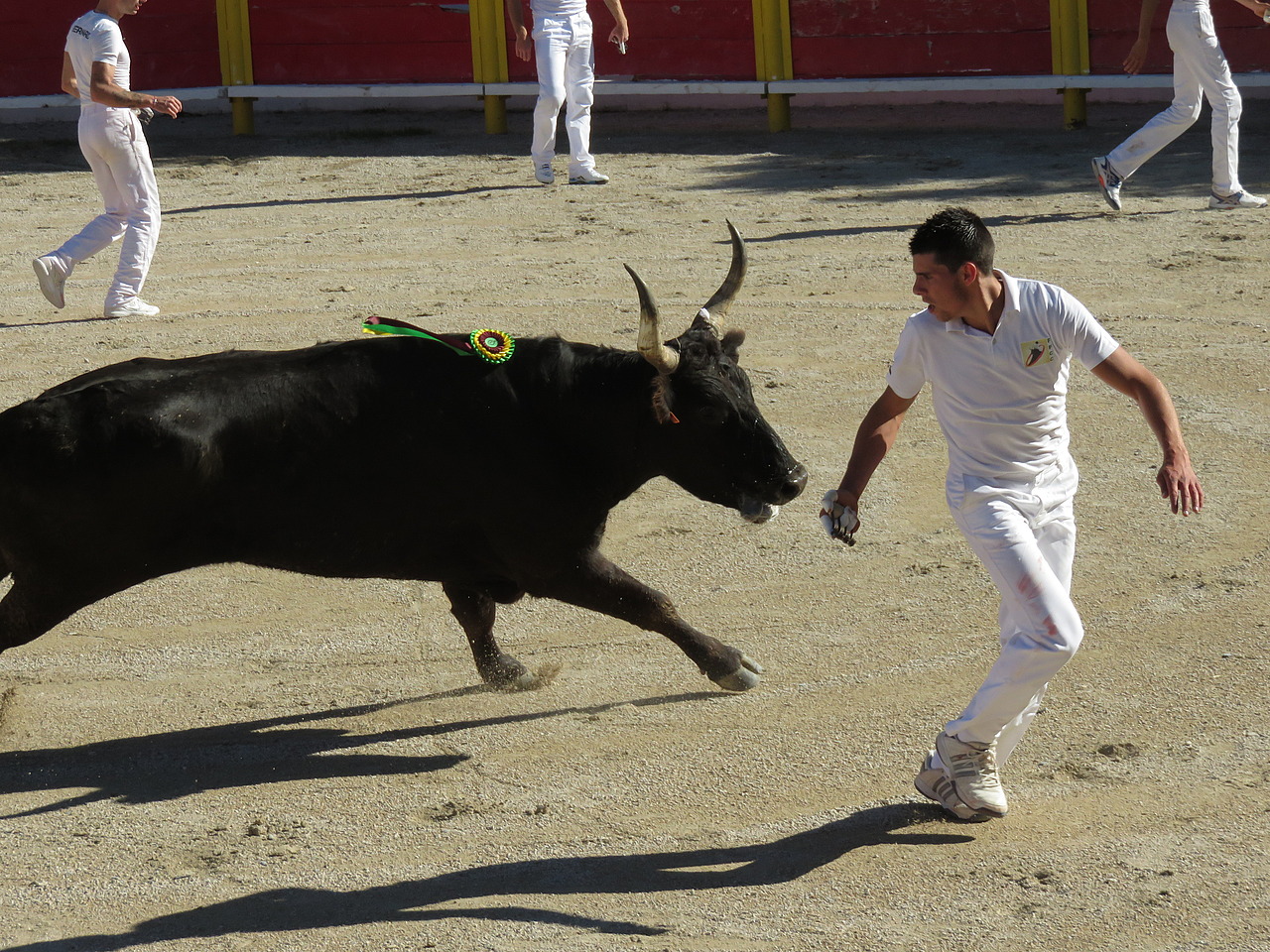 The dozen or so raseteurs are dressed in white, crisscross the arena, calling out to the bull to attract him. Picture yourself sprinting 50 to 100 metres closely followed by a half ton bull then jumping onto a four to five-foot solid wooden barrier and holding on to the bleachers. Then visualize doing this perhaps 20 or 30 times in an afternoon. Frequently, a raseteur would leap up into the bleachers to escape the charging bull, especially when the bull also leaps the barrier! This is when it gets more exciting as the helpers try to get the bull back into the arena as quick as possible. For the spectators in the front row seats keeping a close eye on the action was essential.
The dozen or so raseteurs are dressed in white, crisscross the arena, calling out to the bull to attract him. Picture yourself sprinting 50 to 100 metres closely followed by a half ton bull then jumping onto a four to five-foot solid wooden barrier and holding on to the bleachers. Then visualize doing this perhaps 20 or 30 times in an afternoon. Frequently, a raseteur would leap up into the bleachers to escape the charging bull, especially when the bull also leaps the barrier! This is when it gets more exciting as the helpers try to get the bull back into the arena as quick as possible. For the spectators in the front row seats keeping a close eye on the action was essential. 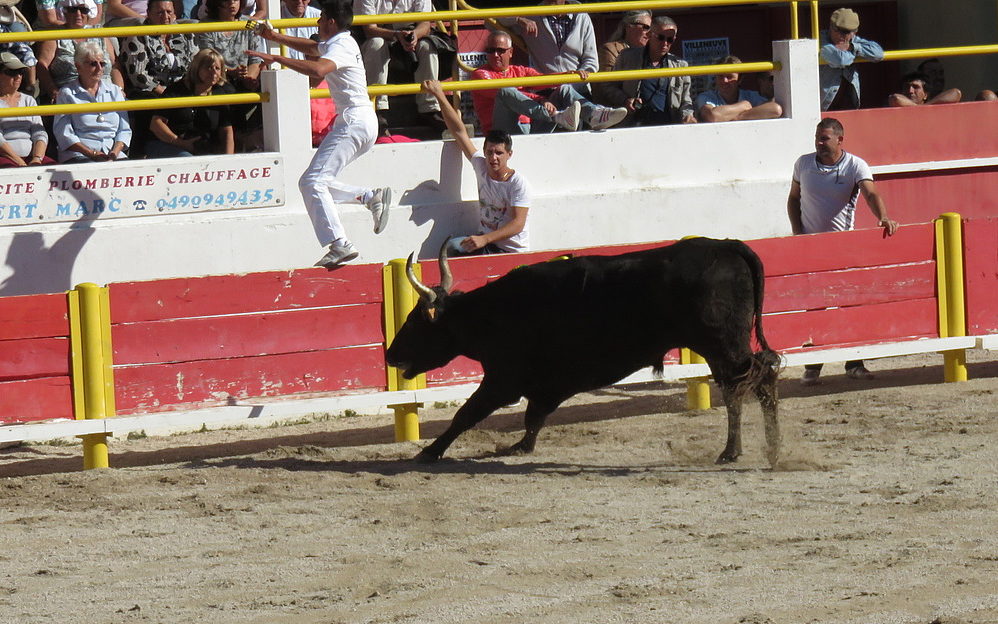 The dangers are obvious, but the raseteurs showed confidence and swagger with each near miss, enjoying the admiration of the crowd. The young men escaped with minor cuts and bruises to their bodies and egos. It was great to see that the bulls received as much applause as the raseteurs.
The dangers are obvious, but the raseteurs showed confidence and swagger with each near miss, enjoying the admiration of the crowd. The young men escaped with minor cuts and bruises to their bodies and egos. It was great to see that the bulls received as much applause as the raseteurs.
